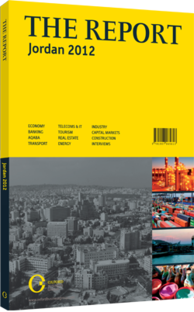OBG talks to Nasser Madadha, Chief Commissioner, Aqaba Special Economic Zone Authority (ASEZA), and Chairman of the Board, Aqaba Development Corporation (ADC)

Interview: Nasser Madadha
Which countries have provided the majority of foreign direct investment (FDI) in ASEZA?
NASSER MADADHA: Although we aim to attract investment from around the world, for the past decade, our main FDI target market was the GCC. Thus, most of the existing investments in ASEZA come from the Gulf and are distributed across several economic sectors. The original ASEZA master plan aimed to attract $6bn in investment by 2020, including 50% in the tourism sector, 30% in the services sector and 20% in industrial activities. By attracting several mega investments, particularly in the tourism and real estate sectors, we exceeded this ambitious goal in 2008, well ahead of schedule.
ASEZA has attracted almost $18bn in committed investment so far. Given that most of this investment is concentrated in real estate and tourism, our plan is to attract more investment in the industry and logistics sectors. This will require us to target countries with strong industrial output and manufacturing.
What plans are in place to establish more value-added attractions in Aqaba?
MADADHA: Increasing the length of stay for tourists is one of our main goals under the ASEZA Tourism Marketing Strategy. Thus, a series of marketing initiatives have been taken to attract more investment in the services sector for the purpose of creating more value-added attractions. In addition, ASEZA and ADC have implemented several projects to develop and enhance Aqaba as a tourism product. For example, we recently opened the new Aqaba Tourist Information Centre, which is considered the first of its kind in Jordan and the region. Another one of our strategic objectives is to enhance transport connectivity between Aqaba, Petra, Wadi Rum and neighbouring countries.
What is being done to ensure rapid growth of Aqaba does not damage the surrounding environment?
MADADHA: At ASEZA, we are very committed to the people of Aqaba and the surrounding natural environment. Thus, we have collaborated with many national and international environmental organisations to promote sustainable development. By doing so, we hope to strike a delicate balance between large-scale development and investment, and the protection of this region for future generations.
How has regional instability affected development works at the New Port of Aqaba?
MADADHA: The Jordanian economy was affected by the Arab Spring, which, among other things, led to a decline in tourist numbers and FDI. Nonetheless, planned development works at the New Port of Aqaba are proceeding according to schedule, largely due to the regulatory stability provided by ASEZA. In fact, if you look at the progress Aqaba has made since 2001, when ASEZA launched the Aqaba Master Plan, you can see that we have met all of our targets, despite external crises and fluctuations in regional markets. In January 2012 the ADC signed a JD65m ($92m) agreement with BAM International and MAG Engineering for marine construction works at the new port, which will be carried out over two years.
Moreover, the expansion of the Aqaba Container Terminal (ACT), which has been rated the region’s most efficient container port, is proceeding well. Furthermore, the New Rock Phosphate Terminal at the South Port, which will handle exports of rock phosphate in bulk in a more technologically advanced and environmentally friendly manner, is now 60% complete, and operations will soon begin there on a trial basis. In addition, it should also be noted that regional unrest has not adversely affected trade volumes at Aqaba Port. On the contrary, in 2011 incoming cargo and transit trade rose significantly, partly due to Jordan’s growing commercial relationship with Iraq. Indeed, in terms of logistics, Aqaba is well positioned to capitalise on Iraqi reconstruction. Although Iraq has a port at Umm Qasr, this facility does not have the capacity to meet the country’s huge cargo demand.
You have reached the limit of premium articles you can view for free.
Choose from the options below to purchase print or digital editions of our Reports. You can also purchase a website subscription giving you unlimited access to all of our Reports online for 12 months.
If you have already purchased this Report or have a website subscription, please login to continue.

